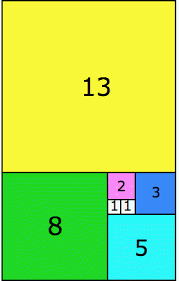Continued Fractions and Pi

The continued fraction of π (pi) is an infinite expression that represents the value of π as a series of fractions. A continued fraction is a unique way of expressing real numbers in terms of fractions with a specific pattern. The continued fraction of π is as follows:
π = [3; 7, 15, 1, 292, 1, 1, 1, ...]
In this expression, the first term is 3, and then the subsequent terms form a repeating pattern. The sequence of terms {7, 15, 1, 292, 1, 1, 1, ...} repeats indefinitely.
To understand how this continued fraction works, let's see how it is formed step by step:
Step 1: The first term is 3.
π ≈ 3 + ...
Step 2: The next term is 7.
π ≈ 3 + 1/7 + ...
Step 3: The next term is 15.
π ≈ 3 + 1/(7 + 1/15) + ...
Step 4: The next term is 1.
π ≈ 3 + 1/(7 + 1/(15 + 1)) + ...
Step 5: The next term is 292.
π ≈ 3 + 1/(7 + 1/(15 + 1/(1 + 1/292))) + ...
This process continues indefinitely, with the sequence {7, 15, 1, 292, 1, 1, 1, ...} repeating in the continued fraction.
To approximate the value of π using the continued fraction, we can truncate the sequence after a certain number of terms. For example, let's use the first four terms:
π ≈ 3 + 1/(7 + 1/(15 + 1/1))
Now, we can perform the calculations:
π ≈ 3 + 1/(7 + 1/(15 + 1))
π ≈ 3 + 1/(7 + 1/16)
π ≈ 3 + 1/(7 + 0.0625)
π ≈ 3 + 1/(7.0625)
π ≈ 3 + 0.14084507
π ≈ 3.14084507
Using just the first four terms of the continued fraction, we obtain an approximation of π as 3.14084507. As we include more terms in the continued fraction, the approximation becomes more accurate. The continued fraction expansion of π is fascinating because it provides an infinite series of rational approximations for this famous irrational number.